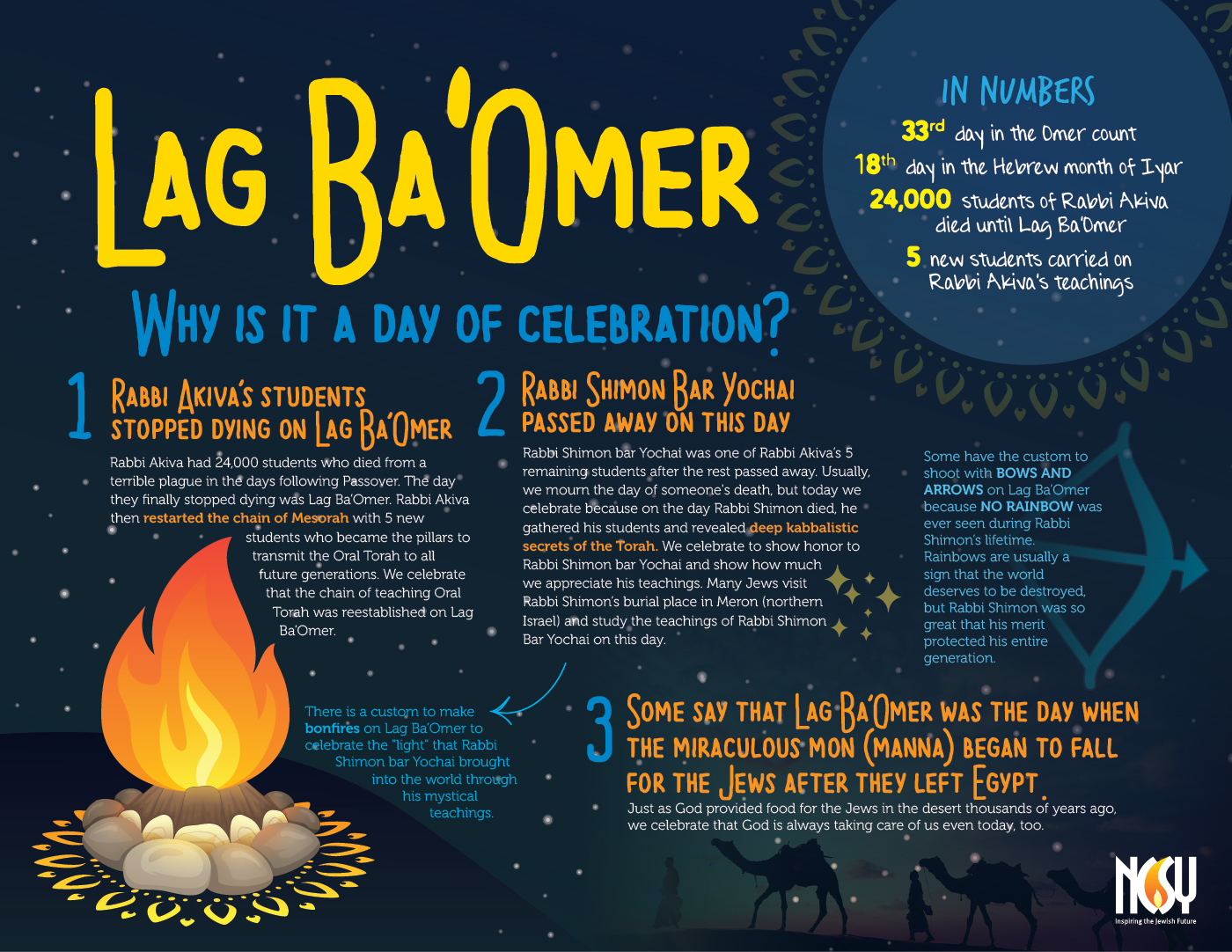
It is not so much the lives that were cut short that we mourn after all, they wouldn’t be alive today even had they lived long lives! It is rather the lost dimensions of Torah, the lost worlds of Torah, that we mourn. We are mourning the lost dimensions of Torah.
#Lag ba omer 2016 full
Instead of its full amplification by 24,000 great human beings, we have only the interpretations of five. The demise of the first group of students essentially resulted in our receiving only a fraction of Rabbi Akiva’s Torah. All of this might well have been different had we received the full breath of Rabbi Akiva’s Torah, as assimilated and interpreted by 24,000 disciples, along with their unique perspectives and understanding. There are whole areas and dimensions of Torah that are not satisfactorily explored there is much argument and there are many areas of confusion. One can study for a lifetime and not “finish” it. As we shall see, the Torah we have was transmitted to us by Rabbi Akiva via the five students whom he taught after the loss of his first group of disciples. Although the Oral Torah always existed, each Torah personality who immerses himself in Torah adds his own understanding and flavor to Torah, thus enriching the Torah which will be passed on to the next generation. To get a better idea of the impact this tragedy had on the Jewish People for posterity, consider the following facts: All of the Torah that we possess and study today, with all of its interpretations, perspectives, dimensions and applications, is all the Torah of Rabbi Akiva. The period during which the epidemic took place was none other than the first 32 days of the Omer.

The tragic consequence of this shortcoming was a brief but cataclysmic epidemic that claimed the lives of these students – all 24,000 of them. Great as the members of this group was, they had one short-coming: They failed to show proper love and respect for one another. Rabbi Akiva, the towering sage of the Mishna, exerted a powerful influence on the Torah scholars of his day, to the point that he had 24,000 disciples. We do not take haircuts, perform weddings, or listen to music. The first 33 days of the Omer are observed as a period of mourning.

What lies behind this rather enigmatic festival of Lag B’Omer? What’s so special about the 33 rd day of the Omer? And who was Rabbi Shimon, to whose name Lag B’Omer is inextricably tied, and why do we celebrate him? And why the bonfires? Ask anyone what the bonfires are for, and you'll be told they are in celebration of Rabbi Shimon bar Yochai, a great sage who lived and taught approximately half a century after the destruction of the second Temple. Their destination? The nearest empty lot, where they pile their treasured possessions to impossible heights and wait with eager anticipation until the night of Lag B'Omer, arguably their favorite time of year, when they turn the piles into enormous conflagrations. Many people have allergies or food sensitivities, so labeling your dish with a list of ingredients is extra-considerate.īring a serving utensil and your own "mess kit" we would like to try to maintain a "carry in, carry out" policy.In Israel, months before the advent of the festival of Lag B’Omer - the 33 rd day of the Omer, the 49 days that bridge between Passover and Shavuot - one can see youngsters dragging all types of combustibles, from fallen trees to broken chairs to old mattresses. Please bring a dish to share that is dairy-free (or clearly labeled as containing dairy).

Together we will celebrate by increasing our own illumination, lighting fires and playing with arrows.

Lag B’Omer (the 33rd day after Passover) celebrates the life of Rabbi Shimon Bar Yochai, a luminary known for revealing light hidden within everyday things, highlighting the extraordinary in the ordinary. Join us for a nature-connected, family-friendly evening of good food, good community and good learning!


 0 kommentar(er)
0 kommentar(er)
